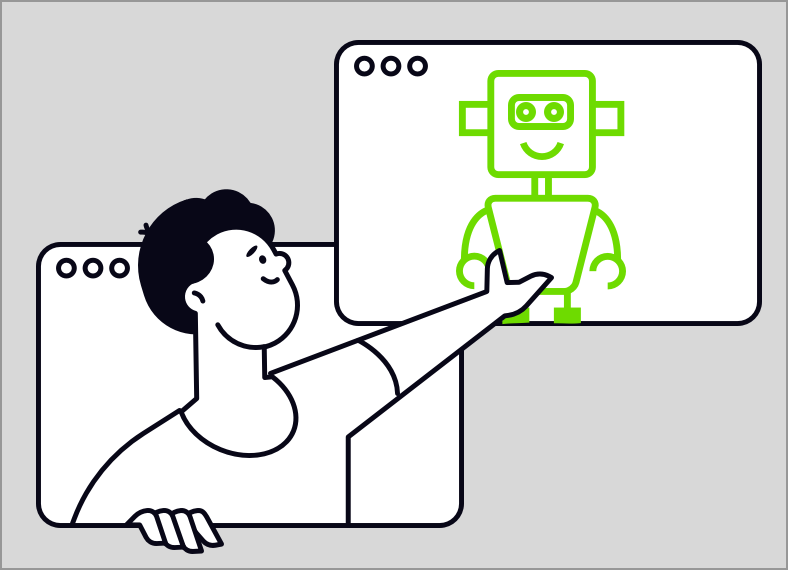We live in the age of artificial intelligence. Sort of. More accurately, we live in the age of algorithmic content‑generation.
Computer programmes can write copy, draw pictures and generate code in seconds. Again: sort of. The intelligence aspect of AI is very overstated – these programmes have no actual understanding of what they’re doing. Therefore they are blissfully emotionlessly unaware when errors occur in their output. And those errors can be both glaring and numerous.
This of course is a technology in its early stages. With a human at the helm, to guide and refine, it can already be used to great effect. So what happens as the technology develops, and the need for human input becomes less and less?
Marketing by machines
Computer programmes can analyse customer behaviour and serve up unique one‑to‑one content in email marketing. The scale, speed and accuracy far exceeds the capabilities of any human marketing department.
For years this has primarily meant product recommendations. These often take the form of a block of personalised content within an otherwise static email. As we move into a more sophisticated era of content generation, it’s not far‑fetched to imagine entirely computer‑authored emails tailored to each unique customer’s preferences from top to bottom.
Be contactable
Email is – or at least should be – a two-way communication medium. All too often however, companies send marketing emails from no-reply addresses. It’s a closed door, and tells the customer: our message matters, yours does not.
As marketing becomes increasingly robotic, leave that door open instead. Give your customer the reassurance of accessible human help.
Join the conversation
Social media is the perfect medium to humanise your brand. Reply to comments, good or bad. Show a sense of humour. Let the world see that there’s a human presence behind the corporate facade.
Likewise, don’t let negative feedback or complaints go unanswered. Nothing puts me off a company like cookie‑cutter replies to bad reviews on Trustpilot. Turn negative into positive by demonstrating a human solution when things go wrong.
A matter of preference
Machine-learning is powerful. But an algorithm will never know your customer better than they know themselves. That’s why a preference centre remains an excellent starting point for personalised email content.
A tick‑the‑box preference form gives customers an easy way to tell you their interests. The obvious benefit is more relevant email content. The less obvious but equally important benefit is the message it sends about the value you place on human choice.
Turn customer into creator
You can create content for your marketing emails. Machines can create content for your marketing emails. But you know who else can create content? Your subscribers.
Invite your customers to share photos or other content themed around your products. Perhaps tie it to a competition. Incorporate this content into marketing emails and suddenly they have more of a community feel rather than corporate.
Everyone gets a vote
Continuing the topic of subscriber interaction – why not encourage engagement through surveys? A simple click‑to‑vote system can be tied to a database at the back end. And let’s keep that two-way communication in mind – current results can be shown via images generated in real time.
The benefits are numerous. Customers see that their opinions are valued. Surveys serve as an insight into consumer behaviour. And your emails become an engaging, living thing.
Be individual
Authentic human content is going to become increasingly uncommon… and increasingly valued. A unique brand voice will be more important than ever.
But why stop at brand level? A company is made up of individuals. Opinion pieces by team members or guest content by industry experts can give your emails a captivating human touch.
The value of authenticity
Generative AI is a fascinating development of the digital age. Anyone can become artist or author or musician at the push of a button. And yet when that work is devoid of effort and meaning, it becomes a kind of creative candy not worthy of perusal. Does that matter when the purpose is marketing rather than self expression? Does it matter when the desired output is a catchy pop song rather than a heartfelt ballad? What happens when it becomes impossible to discern between the creations of a human and a computer? This is a technology that raises many questions across all aspects of human life.
Bringing the focus back to email marketing – it’s important to keep up‑to‑date with technological developments. But perhaps the best marketing in the coming years will be that makes a real human connection with customers.


